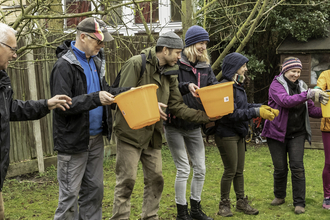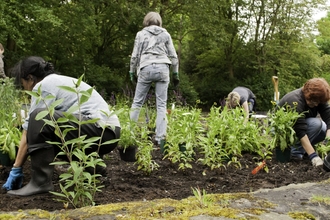Wilder Worcestershire: Neighbourhoods Nurturing Nature. That’s a lot of alliteration for one project but then it’s going to be a lot of amazing improvements for nature in Worcestershire. We have three years to turn a vision into a reality using funding from both The National Lottery Heritage Fund and the Trust itself to involve communities in conservation and creating better spaces for both nature and people.
There are three of us in the project team. There's me - Julie Grainger - I'll be leading the team after previously working with communities as part of the Trust’s Monkwood and Green Farm project. I'm joined by ecologist Connor McGoldrick and (soon to join us) ex-teacher Lucy Thirkell. We'll be liaising with communities to learn more about how people want to help nature in their neighbourhoods before supporting them to establish new groups and begin their steps to taking action for nature to make a Wilder Worcestershire.
The question might be 'what is a wilder place?' According to my Collins dictionary:
Wild animals or plants live or grow in natural surroundings and are not looked after by people.
Wild land is natural and is not used by people.
There is a theme here that seems to imply that our human species shouldn’t be involved in wild spaces. But I think we all now realise that we have spoiled, trampled and besieged nature to a point where it needs help and support to maintain any kind of wilderness.
On another note, Collins tells us that Wild behaviour is uncontrolled, excited or energetic. I like the sound of this but at my age I’m not sure I can completely achieve any more.
So where does Wilder Worcestershire originate and where is it going on its route to improve areas for wildlife? Well, once upon a time back in 2023 there was a report called the State of Nature and it told us that nature is continuing to decline at an alarming rate in the UK. A significant contributor to this decline is the disconnection between people and nature. Our new project builds on the amazing progress made by the original Wilder Worcester team to focus on the urgent need to tackle the biodiversity crisis and reconnect communities with nature in Worcestershire. It aims to support community-led action, with a focus on youth (ages 13 - 25) and underrepresented communities and will encourage collaboration among a diverse range of stakeholders to create a positive impact on the county's natural heritage.
Over the next three years, we will focus on the River Salwarpe to River Severn corridor, encompassing Droitwich, Fernhill Heath, Worcester and Kempsey, where a quarter of the population of Worcestershire live. This corridor features diverse natural landscapes, hosting vital habitats and species outlined in the Worcestershire Biodiversity Action Plan. It is rich in opportunities to support and encourage local communities to take action for nature.






